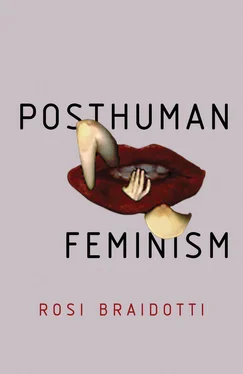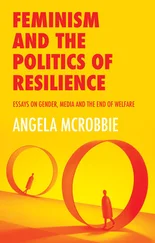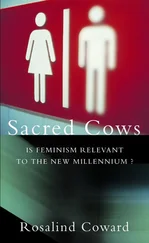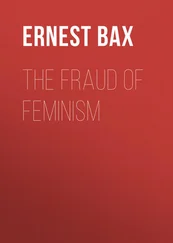The power of ‘Man’ as a hegemonic civilizational model was instrumental to the project of Western modernity and the colonial ideology of European expansion. ‘White Man’s burden’ as a tool of imperialist and patriarchal governance assumed that Europe is not just a geo-political location, but rather a universal attribute of human consciousness that can transfer its quality to any suitable subjects, provided they comply with the required discipline. Europe as superior universal consciousness posits the power of reason as its distinctive characteristic and humanistic universalism as its particularity. It encloses an allegedly universal notion of reason within ‘the snowy masculinist precincts of European philosophy’ and its relentless pursuit of gaining material access to real-life others (Weheliye, 2014: 47).
Controlled by white, European, heterosexual, property-owning, male, legal citizens, mainstream humanistic culture upholds dominant memory and selects who gets to write official history. It functions as a centralized databank that edits out and de-selects the existence, activities, practices as well as the alternative or subjugated memories of the multiple sexualized and racialized minorities (Wynter, 2015). Think, for instance, of the extent to which European mythologies, National Art Galleries, Science and Natural History museums are filled with signs and traces of the subjugation of women, Black and Indigenous people, animal and earth others (Ang, 2019). Their representations are overdetermined and depicted as necessarily absent, excluded from the centre stage. These multitudes of others are as plentiful as they are nameless: so many Indigenous people, Orientalized women, exotic birds, captive Africans, devious mermaids and scary monsters of all denominations abound, but there is only ever one ‘Man’. In the Odyssey , the archetypical figure of Odysseus goes by the name of ‘Nobody’, representing all men and as such becoming the negative of ‘everybody’. 2Man, thus defined is the zero degree of otherness or deviation from the human standard he embodies and projects to normative heights. Like a blank that can be endlessly refilled, he who-shall-not-be-named is entitled to call all others by his name. The mythologized Man in the figure of Odysseus is the face of Anthropos in Western culture.
Disenchantment with the Humanist Figure of ‘Man’
There is a strong European philosophical genealogy of critical reassessment of humanism in modernity, starting with the controversial case of Nietzsche, and moving beyond. As early as 1933, Freud and Einstein pointed out in their correspondence – published as the pamphlet Why War? – that the relationship between humans and science was broken. Technologically driven modern warfare was revealing the depth of the collective death drive ( Thanatos ) and humans’ fatal attraction for self-destruction. The post-war generation of Continental philosophers expressed their disenchantment with the unfulfilled promises of the humanist belief in science-driven progress and false announcements of equality-for-all. They proposed a critical break from the exclusionary version of humanism that positions Eurocentric ‘Man’ as the alleged universal measure of human progress.
In the 1950s, anti-colonialist psychiatrist Franz Fanon exposed the depth of irrational and traumatizing violence that drove European domination of the colonized dispossessed others. Jean-Paul Sartre stated plainly that Europe had betrayed the humanist ideal in the colonies and the concentration camps of the Second World War and exposed the complicity of humanism with both fascism and colonialism. In keeping with postcolonial thought, Sartre endorsed a possible renewal of this concept through non-Western humanisms, notably in his preface to Fanon’s Wretched of the Earth (1963 [1961]). In the 1961 meditation Has Man a Future? , Bertrand Russell excoriated the hypocrisy of the scientific community regarding the irrationality of nuclear weapons and assessed future technological options for humanity rather negatively. The role of science in enabling nuclear doom – rather than enlightened human progress – weighed heavily upon that generation.
Beauvoir’s feminist humanism (1973 [1949]) was multi-layered but at some level quite familiar, in that her vision emphasized women’s equality that has since become mainstream. Equality is defined with reference to the rights and entitlements enjoyed by men, and the feminist project consisted for Beauvoir in balancing the power relations between the two sexes. 3Emphasizing citizenship rights, but also the symbolic representation of women as capable of transcendence, and hence of higher levels of consciousness, Beauvoir targeted the patriarchal arguments for the alleged inferiority of women and tore them to pieces. She argued that patriarchal culture is not dominant because it is superior rationally, epistemically or morally. It is rather the case that, being dominant, it has appropriated the rational, epistemic and moral means to build its hegemonic hold over the social and symbolic structures, including knowledge production, science and technology. Another significant level of Beauvoir’s humanism concerned her socialist creed: she followed Marxist humanism in arguing that the full potential of all humans, and especially of women, has been thwarted by capitalism. Only a full-scale socialist revolution can liberate women, and men, by transforming society radically. Beauvoir never questioned the validity or power of the model of the human built into the feminist emancipatory and socialist politics, but wanted to open it up to the excluded.
Critiques of the tradition of humanism grew in the 1970s when the second wave of feminism arose, the Black anti-racist movement took off, the decolonialization movement unfolded, gay liberation started, radical ecology blossomed, and youth rebellions multiplied. Those radical social movements of the 1970s, in the context of the Cold War, challenged both the unfulfilled promises of Western democracies and the never-achieved utopias of the Marxist revolutionary programme (Judt, 2005). Their aims and constituencies often overlapped, with many socialist feminists doubling up as ecofeminists and peace activists. 4Gilles Deleuze and Felix Guattari (1977) assessed historical and contemporary forms of European fascism 5as the sign of the definitive failure of humanism. Michel Serres (2016) added to this list of grievances the technologically driven Hiroshima and Nagasaki genocides by the US military. He attacked the contemporary ‘thanatocracy’ and its uses of science to destroy humanity and its planetary home. Derrida (1984) also commented on the nuclear end-time and pointed out that flawed humanism and anthropocentric exceptionalism threaten the well-being and survival of all species, including our own.
Both the horrors of the Second World War and the nuclear era in the Cold War that followed had turned upside down the Enlightenment promise of liberating mankind through scientific rationality. Foucault (1970) drew his own conclusions from these critical insights in his famous thesis about the death of ‘Man’. He argued that the historical project of humanism, a pillar of European modernity and of its rationalist, technological development, was reaching the end of its historical cycle and was destined soon to be over. That particular ‘Man’ is dead and his zombified replicants are quite scary. What was left over from European humanism is a glorious tradition of texts and a mixed history of world events. They need to be reassessed critically in terms of the systemic patterns of sexualized, racialized and naturalized exclusions which they endorsed, operationalized and hence made thinkable. This passing of ‘Man’ was not merely a negative comment, as the end of a specific – and for Foucault relatively recent – vision of the human. It was meant also as an affirmative inauguration of new processes of knowledge and insights about life, living systems and what constitutes the human in all of its complexities and multiplicities.
Читать дальше












